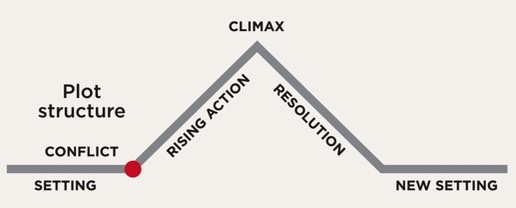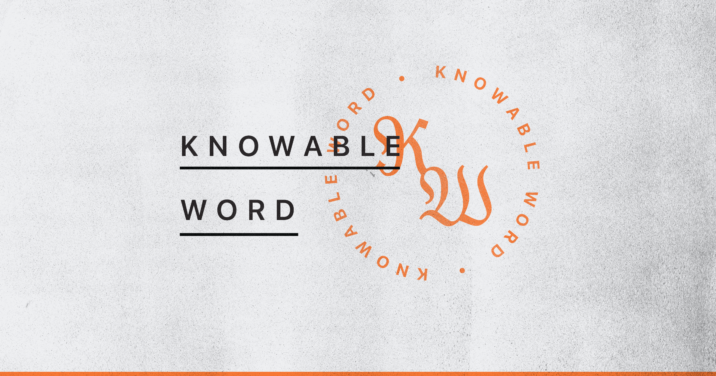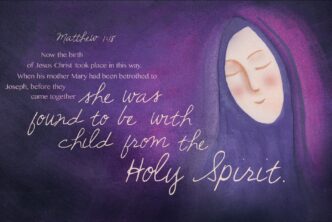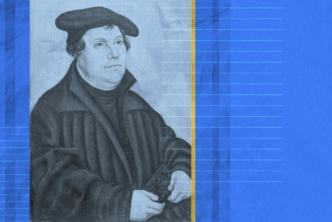Luke wrote his Gospel so his reader could have certainty regarding the things he had been taught about Christianity (Luke 1:4). He opens with narratives to explain Jesus’s credentials (1:1–4:13) and fundamentals (4:14–9:50). The lengthy travel narrative then draws out Jesus’s thinking about God’s kingdom in four areas: its proclamation (9:51–10:37), its growth (10:38–13:21), its population (13:22–17:10), and its timing (17:11–19:27).
In this final installment of our Luke study, we arrive at the book’s final division (19:28–24:53), where everything Jesus said will prove true, and where he is vindicated as the divinely appointed king and savior.
Before we dive in, let’s get our bearings by observing that Luke’s final division subdivides into three sections:
- 19:28–21:38
- 22:1–23:56
- 24:1–53
Luke marks each section by means of an “inclusio,” a literary device that sets off a section of text by using brackets (similar elements at the beginning and the end).
Section 1 begins (19:29) and ends (21:37) with references to Jesus’s arrival at “the mount called Olivet.” Section 2 begins with a plot as the Passover draws near (22:1–2) and ends with the plot’s achievement as the Sabbath approaches (23:54–56). Section 3 begins with the characters traveling out from Jerusalem on the first day of the week (24:1) and ends with the characters returning to Jerusalem to bless God continually (24:52–53).
In these eight weeks, we will focus on developing a skill crucial to understanding biblical narrative: recognizing plot structure. You may remember terms such as conflict, climax, and resolution from grammar school, and the time has come to dust off these old friends. Plot structure is one of the most handy tools for understanding a narrative text, and those who learn to recognize it are more likely to grasp what is important in the story.

Week 1: Rebuke them!
Before we dive in, let me explain what I mean by plot structure. Narratives tend to have a basic shape with six elements:
- Setting: The characters, locations, and situation are established.
- Conflict: The tension that will propel the story is introduced as an opposition between two parties (man vs. man, man vs. God, man vs. nature, man vs. himself, etc.).
- Rising action: The tension ebbs and flows, or additional tension is layered on, to increase suspense.
- Climax: The conflict is finally settled, typically through some sort of reversal.
- Resolution: The ends are tied up to release the tension.
- New setting: The characters (and often the readers) find themselves in a new situation or circumstance because of the conflict’s reversal.
The most important element for us to notice is the climax, because that’s where we’ll normally find the narrative’s point or main idea. But in order to find the climax, we must first identify the conflict (the precise source of narrative tension). When we locate the introduction of the conflict, we’ll be able to perceive the reversal of that conflict at the point of climax.
With this plot structure in mind, read Luke 19:28–48. Try to pinpoint where the conflict of this scene is introduced, and between which parties. In other words, where does the passage begin to feel tense, as though some outcome or state of affairs is in question? Try to identify this tension point before you turn the page.
Note: Verse 28 introduces the entire final section of Luke (19:28–24:53), so you’ll need to look after that verse for the tension of this first scene.
It’s not so easy, is it? Perhaps you might say the conflict is introduced in verse 30, where we readers wonder whether the two disciples will obey Jesus (Jesus vs. two disciples). Or perhaps you might say it’s in verse 31, with the predicted tension between the disciples and the colt’s owners (two disciples vs. colt’s owners). But if either of those are the intended plot conflict, the climax (reversal of the conflict) would be utterly anti-climactic. The disciples go right away (v. 32), and the interaction with the owners occurs just as Jesus predicted but without further comment or rising action (vv. 33–34).
So where does that leave us? Since there is no conflict worthy of the label in verses 28–38, we can classify all of this material as “setting,” which sets up the real conflict in verse 39. It is only at that point that we encounter true narrative tension: Pharisees vs. Jesus. This tension casts a shadow on the propriety of everything that took place in verses 28–38.
Why would your disciples take someone’s colt, just so you can ride it into town? Why would they tell the owners that “the Lord” needs it? Why put their cloaks on that colt? Why do you want to ride it in anyway? You’ve walked all the way across this country (for ten chapters!); why can’t you walk the final stretch? Why are they praising God on the way into the city? Why are they calling you “the King who comes in the name of the Lord?” Why would they proclaim your arrival as bringing peace and glory in the highest heaven? Teacher, rebuke your disciples!
Do you sense the tension? The matter at stake is whether the disciples have the right to do what they have done; whether they ought to be saying and doing what they are saying and doing; whether Jesus will rebuke them or not.
With this in mind, we can look ahead to see the climactic reversal. The tension increases as Jesus speaks of the stones crying out (v. 40). It heightens further as he weeps over the city and its coming doom (vv. 41–44). And then the rebuke finally falls—but not on the disciples. Here is the reversal, and hence the climax: “It is written, ‘My house shall be a house of prayer,’ but you have made it a den of robbers” (v. 46). Those who demanded a rebuke now receive a rebuke.
The Pharisees sought to quiet those who cry out to God, either in praise (vv. 38–39) or in prayer (v. 46). They have robbed God of the worship due him, and Jesus now cries out against them.
We end with a new setting, where Jesus continues teaching daily, and those who try to stifle the worship due to God have no recourse but to plot Jesus’s destruction (vv. 47–48). Where will the next plot arc take us?
Week 2: Who is really under investigation?
In Week 1, I walked you through the elements in the plot structure of Luke 19:28–48 to give you an example. From here, I will expect you to do more of the work yourself. Read Luke 20:1–21:4.
Chapter 20 begins with a brief setting (v. 1) before Luke gets right to the conflict: The chief priests and scribes wish to investigate Jesus’s authority (v. 2). Our conflict here is Jesus vs. chief priests and scribes, though we should observe that more folks will join the anti-Jesus team before the chapter is out (vv. 20, 27). And the nature of the conflict is over Jesus’s authority to do “these things”—presumably, riding into town on a donkey and driving out the merchants.
Who do you think you are, Jesus? Or who gave you authority to do these things?
Observe how Jesus’s preliminary response doesn’t avoid the issue but heightens the tension by tackling it head-on. What does his question about the source of John’s baptism (vv. 3–4) imply about the source of Jesus’s authority, since Jesus and John have been linked all through this Gospel (1:5–2:21, 3:15–22, 7:31–35, 9:7–9, 9:19, 11:1, 16:16)?
What does the parable (vv. 9–18) say about Jesus’s authority, thus adding to the tension?
How do the next two sets of investigations (vv. 19–26 and 27–40) attempt to undermine Jesus’s authority and/or misplace the source of true authority? (Hint: Notice his implicit judgment on their failure to render to God what is God’s—compare with 19:38–39, 46.)
How does Jesus then turn the tables with his own question (vv. 41–44)? What does his riddle imply about his authority?
How does Luke then reverse the conflict by showing us Jesus’s authority in action (vv. 45–47)? How is Jesus acting here like a son, the greatest of the emissaries sent by the owner of the vineyard (vv. 10–13)?
When the climax of 20:45–47 settles into the resolution of 21:1–4, what new state of affairs do we have, as Jesus is now proven to have the authority of heaven? What do his declarations over the offering box say about the way his kingdom works?
We also ought to ask: Why is it that two small copper coins make up all the widow has to live on (21:4)? What had led to this state of affairs (see 20:47)? What should we expect from Jesus, the one with heaven’s authority, when he encounters such a corrupt system?
Week 3: “The days will come …”
This week’s passage (21:5–38) primarily consists of a speech Jesus gives to his disciples in answer to a question (v. 7). There is a lot of talking and not much narrative, so the tools of plot structure will be of limited help to us after verse 8.
But in those first few verses, we must grasp the narrative setup. What is the disciples’ main question? What provoked that question from them? The conflict of expectations between Jesus (v. 6) and his disciples (v. 5) provides the setting and premise for the speech that follows.
In the previous chapter, Jesus told a parable about God sending messengers to Israel, his vineyard, but Israel didn’t listen to those messengers. So as a last resort, God sent his Son, in hopes that the people would respect him (20:9–16). That parable sits squarely in the tradition of Isaiah and other prophets (for example, see Isa 5:1–7), and it shows that Jesus, the Son, is the greatest of the prophets. Now in chapter 21, Jesus again functions like one of the prophets of old, pronouncing the judgment of the Day of the Lord.
To help you understand what Jesus has to say, read Isaiah 13 and 14. Then read Luke 21:5–38 and make a list of every metaphor or verbal connection the two passages have in common. Then answer the following questions:
What does Isaiah 13–14 say God will do to Babylon?
What does Luke 21 say God will do to Jerusalem?
As Jesus speaks, and as Luke writes, the days will come when “this generation” (v. 32) will experience the day of God’s fiery judgment. And Jesus’s disciples need to know what to do when they see judgment approaching, embodied in an invader’s armies (vv. 20–28).
If Jesus will do this to the temple, to Jerusalem, and to a generation of Jews who despise his authority as Messiah (20:2, 44), what do you think he would do to any churches or Christian movements today that rob him of the worship due him (19:46, 20:25) and abuse the weak sheep—such as widows (20:45–21:4)—entrusted to them? Watch yourselves (21:34), and stay awake at all times (21:36).
Week 4: The Passover lamb must be sacrificed
We now arrive at section two (Luke 22–23; see the introduction on page 42). These two chapters describe the unfolding plot to kill Jesus and the plot’s role in bringing to fulfillment his works of Passover freedom and Sabbath rest. Luke 22:1–6 sets up this larger plot arc by introducing the primary conflict between Jesus and those plotting to kill him.
With that big picture in mind, let’s dive into the next group of scenes. Read Luke 22:7–30, and try to identify the introduction of conflict, the rising action, climax, and resolution. Don’t be surprised if you find more than one full plot arc.
Can you see two plot arcs? The conflict of verse 7 reaches its climax and reversal through Jesus’s prediction in verses 21–22. And a new conflict is introduced in verse 24 and reversed in verse 28.
You see, Luke’s phrase that “the Passover lamb had to be sacrificed” (v. 7) serves a major role in the narrative. This is not an off-hand remark, but a calculated introduction of the first scene’s conflict, between Jesus and the role he must fill. Will he do it? Will he follow through? And what does it all mean?
How then do verses 8–20 heighten the tension further? And now that you’ve identified that conflict, rising action, and climax, what do those elements of plot structure suggest about Luke’s main idea in this scene?
The second plot arc in verses 24–30 is more straightforward, but the key question remains the same: How does your understanding of the conflict and climax help you to understand Luke’s main idea in this passage? What is the new setting, the new state of affairs to be brought about by the sacrifice of the final Passover lamb? How do your life and church community embody this state of affairs?
Week 5: “I am ready to go”
Read Luke 22:31–62. We have five paragraphs, with five brief scenes in rapid succession. Verse 33 introduces the primary conflict between Jesus and Peter: Whose prediction will prove true? But we get a second conflict in verse 37, where Jesus predicts that the disciples will be shown to be transgressors. (So the conflict would be the disciples’ eager intentions vs. their failure to grasp Jesus’s intentions.) And a third conflict arises in verse 42, where Jesus grapples with his Father’s will.
We could outline the series of conflicts and resolutions like this:
A Jesus’s prediction vs. Peter’s prediction (vv. 31–34)
B Jesus’s intentions vs. disciples’ intentions (vv. 35–38
C Jesus vs. the Father’s will (vv. 39–46)
B’ Disciples prove to be transgressors (vv. 47–53)
A’ Jesus’s prediction proves true (vv. 54–62)
The middle section resolves very quickly, as Jesus agonizes unto submission to his Father’s will. But the fourth section resolves the conflict of the second section, and the fifth section resolves the conflict of the first. What a literary masterpiece!
Pulling the whole section together, how does Luke contrast Jesus’ submission with the disciples’ professed-but-not-enacted submission? How does this fulfill the Scripture recorded in Isaiah 53, which Jesus quotes in verse 37? (You’ll want to read all of Isaiah 53 for context.)
How does it encourage you to know that Jesus is willing to be numbered with transgressors? How does it provoke you? How can you both deepen your trust in Jesus’s submission to the Father and have a more realistic view of your own? We tend to say, “I am ready to go” (v. 33), but only Jesus can truly say “Not my will, but yours, be done” (v. 42).
Week 6: “If you are the Christ, tell us”
This week’s passage centers on Jesus’s identity as the Christ (or Messiah, or Chosen One). Everybody asks if he’s the real deal, but nobody really wants to know, do they?
Read Luke 22:63–23:25.
Without even realizing it, the guards who mocked Jesus raise a key question for us: Does Jesus know what is happening to him? (Is he capable of prophesying who hit him?) This is called dramatic irony, where the audience knows something the characters do not. This question drives Luke’s narrative of Jesus’s trials. Pay attention to just how much Jesus knows about what is happening to him.
The conflict arises in 22:67, when the chief priests and scribes ask whether Jesus is the Christ. Of course they’re not asking because they want to know, but because they want a basis for accusing Jesus. So the conflict could be described as accusers vs. accused, with the true meaning of “the Christ” at stake.
How does this tension increase through the rest of the passage? Where does it reach climax? How is it resolved?
What does all this suggest about what it means for Jesus to be “the Christ”? How should this understanding of his “Christ-ship” affect your trust, your obedience, and your worship of him?
One more thing: List all the ways Jesus is labeled or described as “innocent” in this passage. How would this theme land with the original audience—Theophilus, a Roman official, desiring greater certainty regarding the truth of Christianity (Luke 1:1–4)? How does this theme land with you?
Week 7: “Certainly this man was innocent”
In our larger plot arc, we now arrive at the peak of chapters 22–23, which also serves as the peak of not only chapters 19–23 but also the entire Gospel. Luke makes his narrative climax nearly as poignant as a firework, or a popping balloon. Once it hits, all that’s left is for the sparks to fall or for the air to seep out of the narrative ecosystem.
Read Luke 23:26–56. You cannot miss the narrative climax in verses 46–47. But let’s put your literary skills to work: What, exactly, is the conflict? And where, precisely, does Luke introduce it in this scene? What tension or opposition reaches its climax, likely through some sort of reversal, in verses 46–47?
Answer that question well, and you’ll gain a solid grasp on what distinguishes Luke’s narrative of the crucifixion from that of the other Gospels (Matthew, Mark, and John).
Week 8: “Everything must be fulfilled”
Read Luke 24. Where does the narrative introduce conflict? Where is that conflict reversed (the climax)? How does the intervening material increase the tension? What is the opening setting, and what is the new setting at the end?
In light of these plot elements, what is Luke’s main idea? And in light of this main idea, how ought you to change in your thinking, your values, and/or your behavior?

***
This article was originally published in the January/February 2021 issue of Bible Study Magazine. Slight adjustments, such as title and subheadings, may be the addition of an editor.
Related resources





